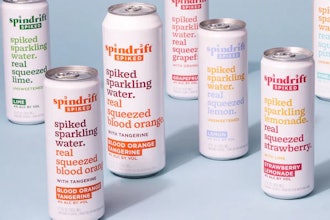Nearly 40 percent of millennials say they would switch brands for transparency[1] – so food producers that provide them with the most accurate and transparent information will be the ones who win their loyalty. Delivering complete and accurate information can, however, be time-consuming and labor intensive – and this is where Product Lifecycle Management (PLM) software solutions can prove to be invaluable.
Eating healthy, eating versatile
Millennials, or America’s youth born between 1982 and 2000, make up more than one quarter of the US population. With a head count of more than 80 million individuals, they are the largest consumer group, even outnumbering baby boomers[2]. They are target consumers in every industry, but particularly for food and beverage producers, they are a crucial capture for sustainable growth.
On the one hand, millennials are on the lookout for healthy foods and drinks that fit their lifestyles and contribute to personal wellbeing. They value natural, ecofriendly, organic and environmentally friendly products. Less sugar, less fat, more fiber, dairy free, allergen free, non GMO – the list goes on, and all of these asks demand continuous innovation from the industry.
Many younger consumers are also looking for products that are convenient – designed for on-the-go consumption. Snacking is a huge trend among millennials, and this influences the way products have to be formulated these days. Portion size, nutritional contents, packaging formats… everything has to be adapted. All of this leads to an ever-increasing variety of products. The pace of change that is now part of the everyday world means that product lifecycles have become shorter, so manufacturers who want to be at the forefront of the industry need to bring products to market more quickly than ever before – even though the demands placed on them have grown. And we haven’t even touched on the subject of regulatory compliance, which can be a real burden, especially on internationally active players.
Transparency is a must
Now aged from around 20 to almost 40, many millennials have become parents, and this has driven their interest not only in buying healthy food for themselves and their kids, but also in finding food they can really trust. Millennials have grown up with food that was not as transparent as it is today. But in the 80s and 90s, most people didn’t really care what was in the products they bought from the grocery store. Today, however, a desire to look after the next generation has boosted demand for label trust. Consumers want to know where their food ingredients have come from, as well as how they have been sourced, planted and harvested. What’s the background to this nutrient content or that health claim? And is there solid science behind it? Questions like these need to be answered properly, and with the advent of the smartphone, it has never been easier for consumers to make informed decisions based on what they can find online themselves. Millennials are tech savvy; they look up and verify label information on their smart devices – and their primary concern is transparency and authenticity.
The label is not the only source of information, of course. Company websites and social media channels are important tools for transparency, too. When asked in a recent survey, more than 50 percent of consumers said they would be more likely to consider brands that are transparent on social media for their next purchase, while a lack of transparency might lead 86 percent to purchase from a competitor[3].
The key for producers and manufacturers looking to fulfill all of these consumer demands lies within their data. Proper data management along the complete product lifecycle is the only way to accurately analyze, integrate and provide relevant information.
Everything under control?
Today, product development and management usually involve cross-functional processes. Many companies manage information and product data isolated in different departments and do not create company-wide visibility. Individual spreadsheets are still in use, meaning that existing resources and expertise are not shared and used efficiently. Companies that are not able to control the entire product lifecycle face the prospect of a slowdown in projects and delayed product launches. And when the product lifecycle is prolonged, production costs increase, which risks a reduced return on investment.
An integrated approach to product development
With the help of Product Lifecycle Management (PLM) software, companies can create organization-wide transparency and boost efficient production, which ultimately enhances performance across all projects. Food producers can react to market changes more quickly, develop innovative products faster and minimize time-to-market. PLM can also create a global project framework that can be adapted to regional and local needs. In terms of transparency and availability of information, a PLM platform can trace and track all product-related information throughout the entire value chain. This detail can also be uploaded to a Global Data Synchronization Network (GDSN®) with a single click, setting the global stage for rapid product rollouts, new market penetration and increased sales around the world.
Once they have learned how to use their data as a strategic asset, manufacturers can increase efficiency and provide seamless, connective, end-to-end solutions for their entire product development system. A PLM platform can help to optimize product development along the supply chain while at the same time monitoring quality controls, regulatory compliance and specific recipe data – such as Halal, Kosher, allergen and nutritional information. All of this supports food and beverage manufacturers in creating healthy and tasty products that fulfill every consumer demand for transparency, traceability and quality, whether the consumer is a millennial or not.
Brent Cutler is President and Chief Operating Officer of the Americas at SpecPage INC.
[1] Source: The 2016 Label Insight Transparency ROI Study
[2] Source: https://www.census.gov/newsroom/press-releases/2015/cb15-113.html
[3] Source: https://www.marketingdive.com/news/53-of-consumers-more-likely-to-purchase-from-brands-that-are-transparent-o/530190/























